The Ribble Valley
The Ribble Valley, nicknamed 'Little Switzerland' boasts some of the most attractive scenery in Lancashire. Much of the valley is contained within within the Forest of Bowland, an Area of Outstanding Natural Beauty. Measuring 300 square miles, time seems to have bypassed this historic area which is immersed in a rich heritage.
The River Ribble near Chatburn
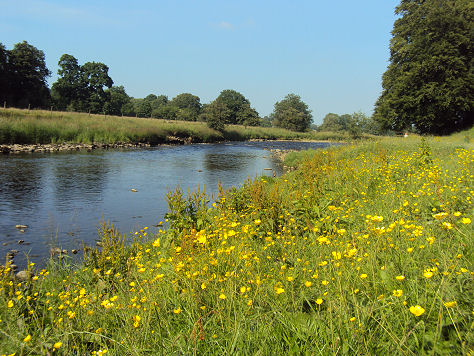
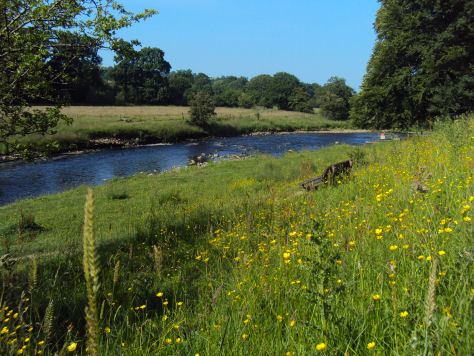
Places to Visit in the Ribble Valley, what to see and where
The unique village of Ribchester boasts a long history being first occupied during the Bronze Age, the village was the site of the Roman fort of Bremetenacum Veteranorum founded by General Agricola, some parts of which have been excavated. Ribchester Roman Museum was built above the remains of the headquarters building of the Roman Fort in 1914. Roman Ribchester is brought to life by dramatic displays, which include a life size cavalryman, Roman legionary and interactive exhibits.
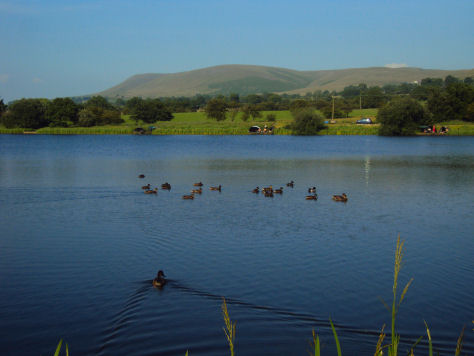
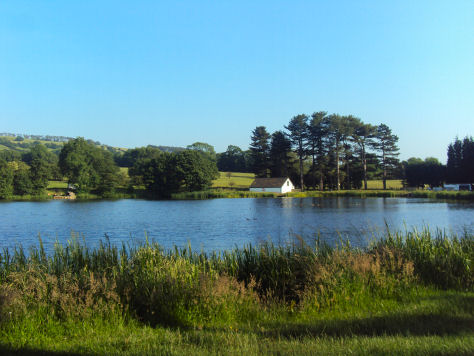
The area contains some highly picturesque villages, the picture postcard village of Chipping is a designated conservation area with many characterful stone cottages, a medieval church and a seventeenth century school and almshouses, the village has been the winner of several 'Best Kept Village' competitions, including the village section of the Britain in Bloom competition in 2009. The delightful village of Downham, situated on the north side of Pendle Hill, is often quoted as the most beautiful village in Lancashire. Boasting old world charm with warm sandstone buildings and cobbled pavements, Slaidburn has a large, attractive village green, pleasantly situated on on the bank of the River Hodder. The attractive hamlet of Great Mitton boasts a medieval church, All Hallows, an ancient manor house, Great Mitton Hall. The oldest parts of the characterful All Hallows Church, a Grade I Listed building, and one of the finest old churches in northern England, date back to the late thirteenth century. It is believed to have been the first Christian church in the Ribble Valley.
The village of Downham and Pendle Hill
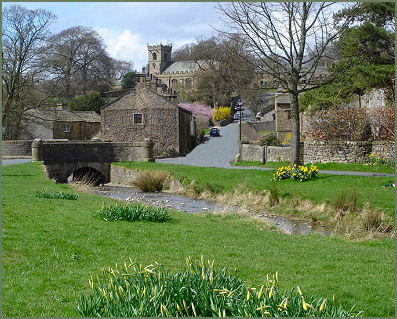
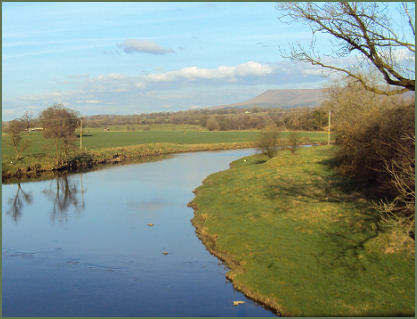
Its babbling brook, medieval hall and the beautiful Coronation Gardens have earned the village of Waddington the title of 'Best Kept Village in Lancashire' on many occasions. During the Wars of the Roses, King Henry VI, of the House of Lancaster stayed for a year at Waddington Hall before being betrayed to the rival house of York in 1465. The king escaped via a secret panel in the dining room but was later captured on the outskirts of Clitheroe.
Newchurch in Pendle lies in the shadow of Pendle Hill and is famous for its associations with the notorious Pendle Witches case. In the early seventeenth century the village was caught up in the largest witch hunt in English legal history. It was a sinister episode that saw the arrest and execution of ten alleged witches. The curious 'eye of God', an elliptic shape on the church tower watches over the village, it was installed some years after the witches’ execution to ward off evil spirits.
The Ribble Valley and Cromwell's Bridge, near Hurst Green
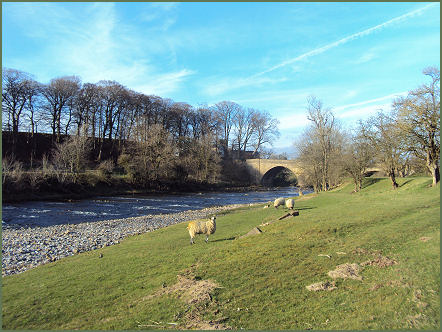
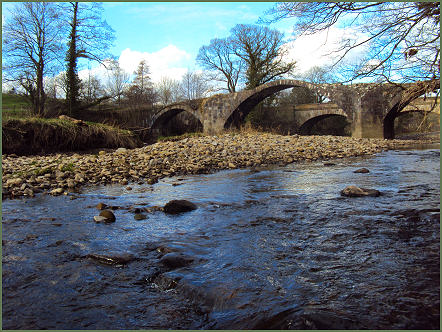
Cromwell's Bridge near Hurst Green,(OS Grid Ref- SD 704 391) a picturesque packhorse bridge which dates back to the sixteenth century, was crossed by Oliver Cromwell and his army before before the battle of Preston in 1648.
Bowland Wild Boar Park, near Chipping offers a brilliant and fun day out for all the family and is home to a range of wildlife including Deer, Llamas, Red Squirrels, Goats, Peacocks and Barn Owls. The park has 30 acres of woodland to explore with attractive walks alongside the River Hodder. It also features tractor rides, a play area, lamb Llama and deer feeding. During the summer months visitors can bottle feed the lambs.
Whitewell and Whalley Abbey
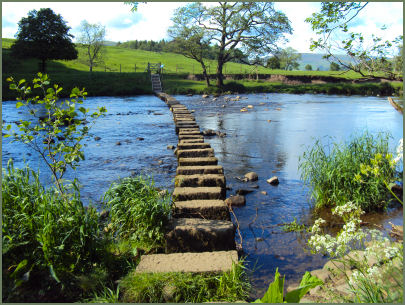
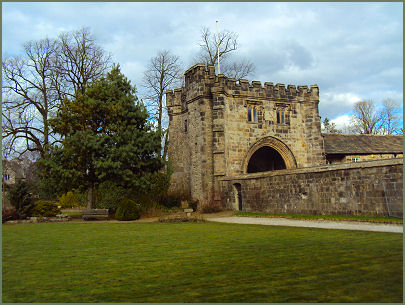
The Norman castle keep at Clitheroe, which stands on a natural limestone outcrop, has dominated the surrounding landscape for over 800 years. Said to be one of the oldest buildings in Lancashire, and one of the smallest keeps in England, the castle was possibly built by Robert de Lacy circa 1186. The Castle Museum, in the shadow of the Castle Keep, has new look galleries which take the visitor on a journey through 350 million years of history, heritage and geology of the local area and features exhibits of finds discovered on the site during excavations.
Whalley Abbey, a former Cistercian abbey was founded by Henry de Lacy, third Earl of Lincoln on the 4th April 1296. The abbey closed in 1537 as part of the dissolution of the monasteries. Its Abbot Paslew was tried at Lancaster and executed for high treason in Whalley on the 10th March 1537 for taking part the Pilgrimage of Grace, a northern rebellion against King Henry VIII, which had taken place in the previous year. Only the foundations of the church remain. The remains of the former monastic buildings are more extensive. The west range, which was the lay brothers' dormitory, consists of two stories, and is roofed. To the south of the cloister, part of the walls of the former kitchen and refectory remain. The east range is more complete and includes parts of the walls of the former monks' day room, parlour and vestry.
The area around Stonyhurst, is believed to be the inspiration for J.R.R. Tolkien's 'Middle Earth' in the novel Lord of the Rings. The Tolkien Trail is a circular walk 9km/5.5 mile, taking the visitor around the sights which influenced the great author, including Stonyhurst College grounds, founded in 1593, Tolkien stayed in the guest house.
The Cuerdale Hoard, an enormous Viking silver treasure of some 8000 silver coins and pieces of bullion, was discovered in the Ribble Valley, in 1840. It is one of several Viking hoards unearthed in England, but is the largest to date. It is larger than any hoard found in Scandinavia and is the largest Viking silver hoard ever found outside Russia. The hoard was found by workmen employed in repairing the embankment on the south side of the River Ribble at Cuerdale, near Preston, where it had been buried in a lead chest. Silver formed the basis of currency in the Viking Age and it was often buried in times of unrest. The coins found in the hoard indicate that it must have been buried in the years between 905 and 910, soon after the Vikings had been expelled from Dublin in 902. The Ribble Valley was then an important Viking route between the Irish Sea and the city of York.
The Ribble Way is a waymarked 73 mile (117km) long distance trail which follows the course of the River Ribble, from its mouth at Longton, on the salt marshes of the estuary, along the beautiful Ribble Valley to its source at Gayle Moor near Ribblehead, in the Yorkshire Dales National Park.
